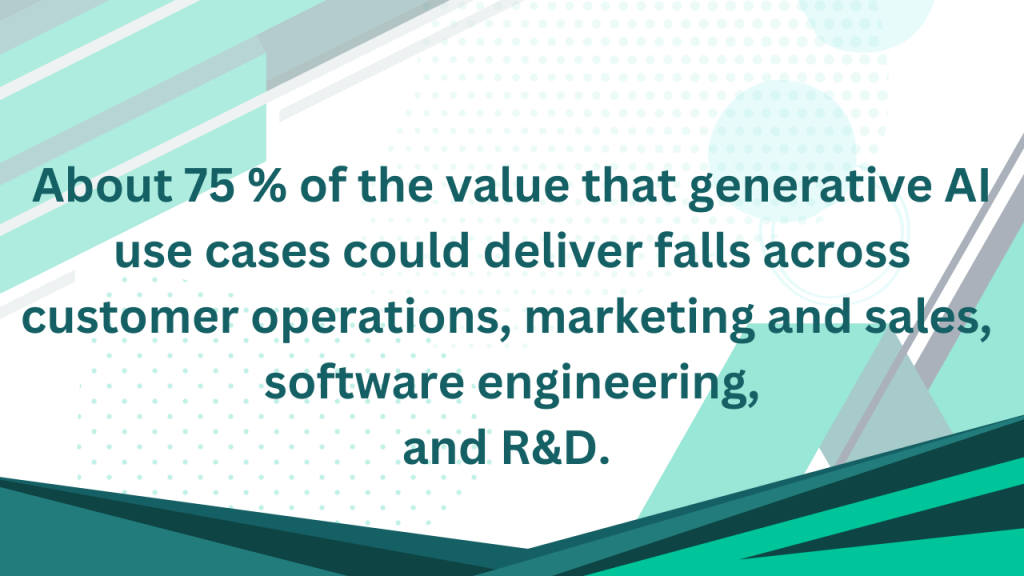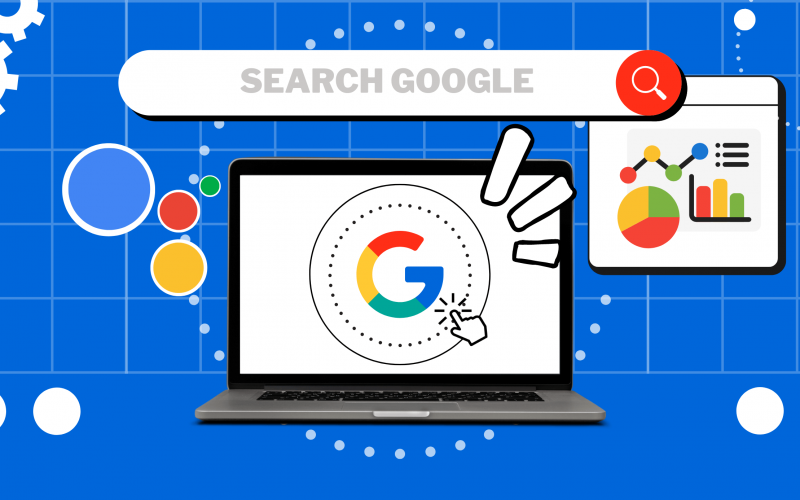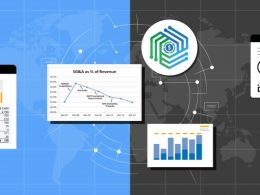2023 is a very busy year for AI, according to Sundar Pichai, CEO of Google and Alphabet, who announced Google Search Generative Experience (SGE) at the annual developer conference Google I/O on May 10, 2023. And indeed, we even got used to the bold and evolutionary news in the media about AI in recent years. Explainable AI, federated learning, quantum computing and generative AI all are here to change the landscape and permeate our lives to an unimaginable extent. And yet, we need to try to predict how this AI evolution, or maybe revolution, might transform our lives and impact businesses. As it always goes with information, getting ahead of the curve and keeping up with the latest technological breakthroughs is a game changer.
In this article, we’ll explore the potential implications of Google Search Generative Experience for businesses and users, and look at the challenges and opportunities that SGE presents.
Contents:
1. What is Google search generative experience (SGE) and what does it mean for users?
2. SGE implications for businesses

1) What is Google search generative experience (SGE) and what does it mean for users?
Getting back to SGE, let’s try to get some idea of what this Google innovation is and how it works, relying on the information available now. Based on Sundar Pichai’s words, Google search generative experience is still under development, but it’ll be rolled out to users over the coming months, which leaves some time to catch up. He said that SGE will be available in English at first, but that it’ll be translated into other languages in the future. He described SGE as a new way of presenting search results with the help of generative AI and “a more natural and conversational way to search”, and said that using generative AI allows creating informative and engaging summaries of search results.
Now, let’s see what these words mean for the users:
- More informative and engaging summaries of search results means that users will be able to see more than just a list of links when they use Google’s search engine. Being able to see summaries of the content can help users decide whether they want to click on a link. It all makes the searching process faster and more productive, which will totally reshape the buying guides that we know now and as a consequence, our shopping experiences.
- More conversational and natural than traditional search means that users will be able to ask questions in a more natural way, and that SGE will be able to understand their questions and provide personalized and relevant answers. The ability to ask additional questions to the same search will help refine the results the search engine provides without starting a new query.
If we follow Sundar Pichai’s speech, we’d come across one of the mind-boggling examples of supercharging Google products with generative AI, Google app Help Me Write for Gmail. Now the program can not only write the whole draft of the letter based on users’ prompts and pull the necessary details out of the previous mail, but can further refine the created email so that it can, let’s say, increase the chances of getting what the customer wants. That makes Google users round the globe free of the language barrier, in some situations at least.
Then there came more examples of magical AI work with Google products like editing pictures, getting an immersive view of the city – fifteen products all together serving more than half a billion people and businesses in total.
On the whole, Google sees its mission as organizing the world’s information and making it universally accessible and useful, which is very ambitious, and plans to advance their mission in four ways:
- Improving knowledge and learning;
- Boosting creativity and productivity;
- Enabling others to innovate;
- Building and deploying AI responsibly.
Sundar Pichai’s announcement of Google’s search generative experience and Google product updates was met with excitement by many in the tech community. While supporters of AI believe that SGE has the potential to revolutionize the way that people search for information, other people are more cautious about such news, taking into consideration the fact that SGE is still under development and that it’s not yet clear how it’ll be received by users.
2) SGE implications for businesses
General implications for businesses
If we look at the very surface of what SGE might mean for businesses, it seems safe to say that there are five most likely outcomes:
New marketing and advertising opportunities
Businesses could access SGE to create personalized summaries of their content that are tailored to the specific needs of individual users, which will certainly attract more customers.
Improved customer experience
Personalized content created by SGE might also improve the customer experience by providing users with more relevant and valid information. This in its turn, could lead to increased satisfaction and loyalty, as users are more likely to have a positive experience when interacting with a business’s website or content.
Increased visibility and click-through rates
Providing more comprehensive and informative summaries of the content, SGE could help businesses increase their visibility in search results. This might lead to increased click-through rates, as users are more likely to click on a result that they can understand and that provides them with the information needed.
These seemingly obvious advantages of SGE for business purposes come together with some potential challenges that are best to be known in advance.
The need to adapt content for generative AI
In order to work successfully with SGE, businesses will need to adapt their content to be more conversational and informative, which may require considerable changes to the way that content is written, structured, and organized. While SGE may increase traffic to websites with high-quality materials, content producers and SEO experts will have to guarantee that the content satisfies the new demands and is in line with the new kinds of searches that SGE users can make.
The need to compete with other businesses
The competition for visibility in search results will become more intense as more businesses get into the game and adopt SGE. Looking for ways to stand out from the crowd and provide users with the most informative and engaging summaries is a never-ending process.
Deeper implications: The McKinsey & Company research
Now, if we dig a little deeper for implications that businesses might have because of the SGE introduction, we wouldn’t want to miss the recent report “The economic potential of generative AI: The next productivity frontier” by the consulting giant McKinsey & Company. The report highlights the data gathered during the survey of about 1,492 participants from various industries globally and points out that over the last five years business adoption of AI has more than doubled, and this tendency is most likely going to accelerate. Let’s look at the key insights that the report provided us with.
1. The era of generative AI is just beginning
It’s clear that all we see now, however exciting and new it seems, has been years in the making and required a lot of work to reach the results that the larger public can access now. As all new technologies tend to reshape societies, we need to be ready to face the opportunities and risks of generative AI implementation.
While the implications are being studied now and the development is going on, the business community and society are going to manage the risks of implementing generative AI such as intellectual property infringement, potential biases that AI generated content might spread. At the same time, economic challenges will make us realize what necessary skills and abilities are needed for the changed workflow, which means that we should always be ready to retrain and reshape when the need arises.
2. Generative AI can substantially increase labor productivity across the economy and change the anatomy of work
Same as during the Industrial Revolution, generative AI introduction might significantly augment work by means of automating individual activities, leading to productivity boost. However, boosting productivity will require investments in retraining workers, who choose to shift work activities or change jobs. According to the report, the expected labor productivity growth is between 0.1 and 0.6 percent annually through 2040, depending on the technology adoption rate and worker time redeployment. For example, the total percentage of hours that could be automated by integrating technologies existing today reaches 60–70 percent. But as long as adoption of new technologies doesn’t happen in a click, the results would depend on how fast and to what extent the adoption of generative AI technology is possible in reality. According to the report, the adoption of new technologies is likely to be faster in the developed economies. Additionally, the report highlights that generative AI has the potential to impact more educated workers (creatives, educators, professionals) or high-wage jobs in comparison to automation technologies deployed before.
3. Generative AI’s productivity boost has a potential to add trillions of dollars in value to the global economy
Having studied and analyzed 63 use cases across various industries, researchers at McKinsey & Company came to the conclusion that generative AI implementation could add the equivalent of $2.6 trillion to $4.4 trillion annually. That would potentially add 15 to 40 percent to the $11 trillion to $17.7 trillion of economic value that non-generative AI and analytics could unlock now, according to the estimates of the researchers.
4. Generative AI will have a significant impact across all industry sectors
The biggest impact like the percentage of revenues from generative AI is expected in banking, high tech and life sciences. The banking industry alone is projected to get an additional $200 billion to $340 billion annually, on condition the use cases were fully implemented. Retail and consumer goods might potentially get $400 to $660 billion a year. In the life sciences industry, for example, generative AI is projected to make significant contributions to drug discovery and development, while in the banking industry AI is supposed to take on lower-value tasks in risk management, such as required reporting, monitoring regulatory developments, and collecting data.
5. About 75 percent of the value that generative AI use cases could deliver falls across customer operations, marketing and sales, software engineering, and R&D
The researchers at McKinsey & Company studied 63 use cases across 16 business functions. The cases studied were the ones where the technology might help to address certain challenges with at least one measurable outcome. The tasks chosen for the AI technology were related to the generative AI ability to interact with customers, generate creative content for sales and marketing, and draft computer codes based on natural-language prompts.

6. Based on the increases in the potential for technical automation, workforce transformation pace is likely to accelerate
One of the conclusions of the report is that half of today’s work activities could be automated between 2030 and 2060, with a midpoint in 2045. Earlier estimates (2017) postponed such projections for at least a decade.
3) SGE in ecommerce
Growing an ecommerce business requires more and more effective communication with customers. Thanks to a working combination of the existing AI tools and new generative AI, chatbots might have enhanced capabilities like mimicking the interaction style of humans, responding directly to a customer’s query, tracking or canceling an order, offering discounts, and upselling.
Such a level of repetitive tasks automation may help workers allocate more time for solving some complicated customer problems. This will surely make customer service more effective.
At the same time, disruption of search algorithms and changing organic search results will add extra work for content makers and SEO specialists.
Bottom line
SGE represents a significant shift in the way people interact with search engines, giving them a different search experience through more engaging summaries and making it easier to find the necessary and relevant information. Businesses are projected to enjoy increased visibility and click-through rates on condition of providing more expert content, which should lead to increased customer loyalty and satisfaction.
On the whole, generative AI is sure to bring on productivity boost in the global economy, which can only be inhibited by the speed of technology adoption. So Google’s endeavor here is to embrace the changes and learn the fastest way possible.







.png)
